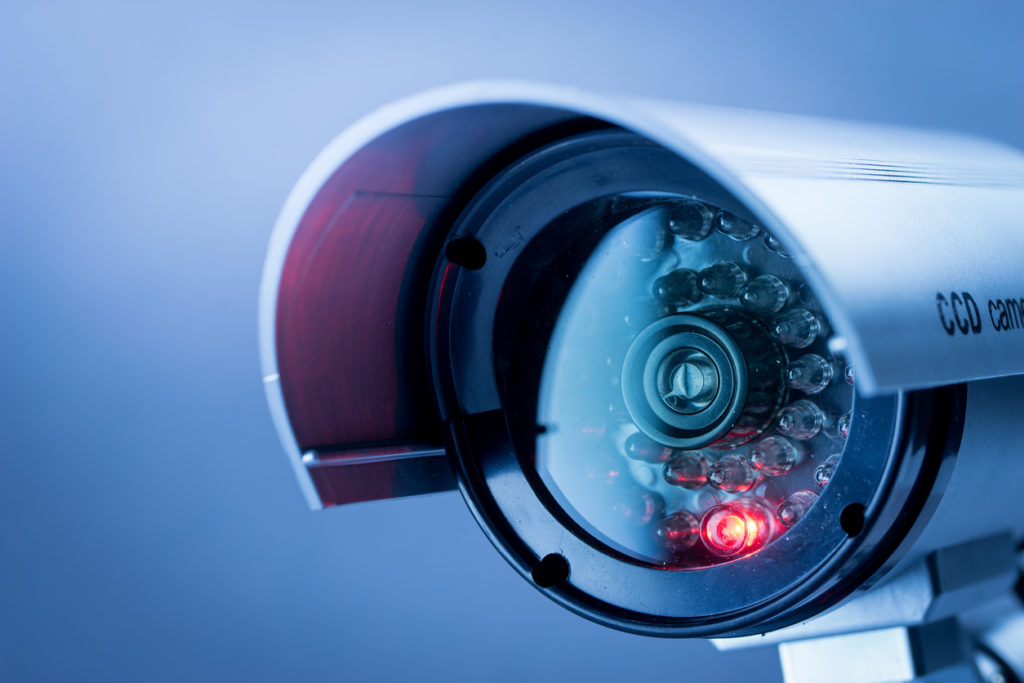The key to the Electro-Optic (EO) sensor (a camera and a lens assembly) will be the quality of the image. If the image quality is poor and unreliable, then user confidence will ebb very quickly, and the system will fail. An imaging device, the camera, is required to provide Detection, Recognition, and Identification (DRI). DRI is the most critical performance criteria of an imaging device in any role.
The starting point for a Closed-Circuit Television (CCTV) is the camera. It creates the imagery that can be transmitted and viewed by the user/operator. Most cameras for this application are not fitted with a lens. The lens must be provided separately.
THE LENS
The human eye is an incredibly adaptive device; by contrast, the CCTV lens is exceptionally crude. An essential aspect of the CCTV system is correct lens selection. The main factors when selecting a lens for the camera is focal length and the type of iris control. The choice will depend on site, application, and the required results.
Primary lens types are as follows:
- Fixed Focal Length – sometimes called a monofocal lens, it is specified when a precise field of view is specified.
- Variable Focal Length – this has a limited range of focal length adjustment, it is not strictly a zoom lens due to the quite short focal length.
- Manual Zoom Lens – A zoom lens in which the focal length can be varied manually over a range.
- Motorised Zoom Lens – manual zoom lenses are not widely used on CCTV systems. The most common is small electric motors drive a lens with its zoom function.
LIGHT OR LACK OF IT
Most users of CCTV cameras expect their EO camera system to operate a 24-hour duty cycle and should provide a day/night capability, within the bounds of the following accepted light levels, as defined by the Royal Military College of Science (RMCS), as follows:
| Situation | Level in Lux |
| Clear Sunlight | 105 |
| Full Summer Day (Noon) | 7 x104 |
| Cloudy Summer / Bright Winter Day (Noon) | 2 x104 |
| Cloudy / Dull Winter Day (Noon) | 5 x103 |
| Dense Overcast Winter Day (Noon) | 103 |
| Good Indoor Working Illumination | 5 x102 |
| Winter Sunset (Clear Sky) | 2 x102 |
| Twilight (Dusk) | 101 |
| Deep Twilight | 100 |
| Clear Moonlight (Moon High in the Sky) | 3 x10-1 |
| Moonlight (Full Moon) | 10-1 |
| Moonlight (Half Moon) | 10-2 |
| Clear Starlight (GSR Conditions for II Sights) | 10-3 |
| Overcast Starlight / Overcast Dull Rainy Night | 10-4 |
| Very Overcast Starlight | 10-5 |
CAPABILITY
Very few Commercial Off The Shelf (COTS) devices cover all of the illuminance levels as defined in the table. Most urban scenes have artificial lighting, such as street lights, that aid vision at night and at the lower levels of light to be found in remote rural locations.
A true 24-hour capability for the camera system is essential in security applications, where CCTV is ubiquitous, and it must be capable of deployment and operation across the entire spectrum of ambient light and environmental conditions. But this is often not achievable due to the cost of the system. Therefore, some concessions must be made to achieve an acceptable level of performance within a budget. Ideally, camera resolution in both day and night should be able to provide at least Detection and Recognition of targets from bright sunlight to very overcast starlight.
If the camera is to be set up and operated outdoors, it will need to be capable of working in all weather conditions. This is usually a function of the encapsulation; an external camera housing used to protect the camera and lens assembly from the elements. If protected, the camera will operate within its performance parameters. Such encapsulations can be sealed and purged, positively pressured, or merely a cover from the elements, with or without a heater to keep a stable environment around the camera and lens. Protection from solar loading as well as precipitation and temperature changes is critical. It is desirable that they should be passive and essential that they should have a low probability of intercept.
At viewing ranges out to 5 kilometres (the limit of European inter-visibility);
- There is less than a 10% chance that line of sight will exceed 3 kilometres;
- There is less than 5% chance that the line of sight will exceed 5 kilometres;
- There is therefore little justification for a ground-based surveillance device that requires line of sight to a range greater than 5 kilometres.
Time for reaction and interception by a security team or Law Enforcement (LE) is short. Real-time information is required from sensors. Therefore, image integration and other image processing techniques that provide a significant lag are not acceptable in security applications.
The range of operation of the system and the operational performance are crucial to defining the type of surveillance system to be provided. Systems with relatively wide fields of view or ability to cover the area of interest quickly are needed for wide area surveillance. A camera system is passive in its process of resolving imagery in all conditions. Unless it is aided by artificial illumination built into the camera – lens assembly.
Generally, to take action and exploit the imagery of the system the ability to recognise the individual or activity is necessary. The capability to recognise must be a performance parameter of any EO sensor. And the EO sensor must be of sufficient resolution to allow the user to understand what is being observed and react appropriately. In this scenario, the Thermal Imaging camera will be able to provide such information. However identification will be more subjective, and the provision of a colour CCD sensor may be required to give an objective identification capability.
CCD TECHNOLOGY
A Charge-Coupled Device (CCD) is a group of optical detector integrated circuits made from semiconductors. The lens focuses light onto the CCD. The individual photodiodes sense the areas of light and dark, which build up an electrical charge proportional to the light. Photodiodes are organised in a matrix of rows and columns, known as Pixels.
The first CCD’s were made in 2/3” format to replace older camera technology. CCD technology has improved, and the size of CCD’s had decreased to 1/2”, 1/3” 1/4” and 1/8th to make cameras smaller and more compact, but not necessarily cheaper. CCD size is often referred to with an imperial fraction designation such as 1/1.8″ or 2/3″, this measurement originates back in the 1950’s and the time of Vidicon tubes. CCD cameras typically have much smaller sensors than a Digital SLR, are less sensitive to light, and inherently more prone to noise.
Common CCDs are sensitive to near-infrared (IR) light, which allows IR photography, night-vision devices, and zero lux (or near zero lux) video recording. For standard silicon-based sensitivity is limited to 1.1μm. A consequence of their sensitivity to IR is that IR from remote controls will be visible if the CCD does not have IR blockers.
DUAL SENSOR CAMERAS
These units are bespoke, and consist of two CCD’s that mechanically transit to the optical plane on command from the operator. Typically, the daytime sensor is a colour CCD, and the night time sensor is an Image Intensified CCD (ICCD). Many camera providers mis–market the dual sensor capabilities of their cameras which are in fact a single sensor with a dual mode that permits a higher sensitivity at a lower light level.
Dual Sensor Cameras are expensive and bulky; they are also delicate due to the mechanical CCD transport, many suffer from a field of view change when the CCD’s are changed over, and the use of an ICCD creates expense, causes the device to be more complicated and delicate.
ELECTRON MULTIPLICATION CCD (EMCCD)
An EMCCD camera provides high-resolution full-colour images from full Sunlight down to quarter Moonlight, and after that monochrome images down to Starlight. As a single sensor camera, it is not mechanically complex, and as a solid-state device is robust being designed for military use.
EMCCD technology is a digital scientific detector innovation first introduced in early 2000, followed by a spectroscopy version at the beginning of 2005. At the time, the inventor coined the term ‘EMCCD’ to amply describe the underlying process that defines this novel technology platform. EMCCD is a digital camera technology that can provide a night vision capability.
Due to lower costs and the somewhat better resolution, EMCCD’s are capable of replacing ICCD’s in many applications. ICCD’s still have the advantage that they can be gated very fast and thus are useful in applications like range-gated imaging.
EMCCD cameras require a cooling system to cool the chip down. This cooling system adds additional costs to the EMCCD camera.
The low-light capabilities of EMCCD’s are used in astronomy. In particular, their low noise at high readout speeds makes them very useful for lucky imaging of faint stars, and high-speed photon counting photometry.
At night the EMCCD is monochrome and of the performance equivalent to a GEN 2 Image Intensifier or slightly better, and very good in urban light scenes, and rural scenes of 10-3 (0.001 Lux).
EMCCD’s are at a lower cost than other technologies.
PIXEL BINNING
Pixel binning improves the low light performance of CCD cameras.
The technology is used to increase focusing accuracy by reducing the time necessary for image acquisition and providing greater sensitivity to lower out-of-focus light levels. The signal-to-noise ratio is increased by a factor of four. However, image resolution is cut by 50 percent.
The benefit of pixel binning is to improve CCD performance in low light conditions. Cooling the CCD to low temperatures can also enhance performance.
Cameras that use the Pixel Binning technique are monochrome and with sensitivity, and performance equivalent to a GEN1 Image Intensifier, and are excellent in low light urban scenes. They are at a significantly lower cost than other technologies.
DUAL MODE CAMERAS
Often mis-marketed as dual sensor cameras, these are single CCD camera with an IR cut filter over the CCD in daytime colour mode, which is removed to obtain a lower light sensitivity in monochrome mode. There are a plethora of such offerings on the market; a great many are modelled on the Sony CCD’s.
SUMMARY
Image intensification is often ruled out as too costly regarding both capital expense, and cost of ownership. Image Intensifier tubes can be delicate and will require an equally fragile sensor changeover transport to remove the ICCD from the optical path for daytime operation. Additionally, the purchase of Image Intensifier tubes can be commercially tricky as a controlled technology.
Other technologies that will provide daytime vision and night vision have been covered. Performance is almost always aligned with cost. 24-hour coverage from full daylight through to late evening and beyond into the night hours is possible using CCD camera which utilises the Pixel Binning technique if there is a target ambient light level of 10 – 1 lux scene illumination. This means standard urban street scenes, and lighting conditions, or sites that use flood light illumination for security.
To achieve full vision across the 24-hour period in any lighting and environmental conditions points towards EMCCD cameras, and TIC. EMCCD cameras will provide excellent daylight coverage, but their nighttime performance will vary according to lens performance from 10-1 (0.1 Lux – Half Moon) to a possible10-5 (0.00005 lux – Overcast with no Moon), the lens dependent. However, these are expensive regarding capital cost, and system autonomy, as their consumption can be quite high to drive their Peltier coolers, and this will also have some cost of ownership impact.
Barry ET Harris MBE is a consultant for Proelium Law LLP, he is a veteran of 23 years’ service in the British Army, he combines specialist operational experience with wisdom gained from extensive commercial consulting, executive, and management expertise in his specialities gained in complex environments and high-risk jurisdictions worldwide.







